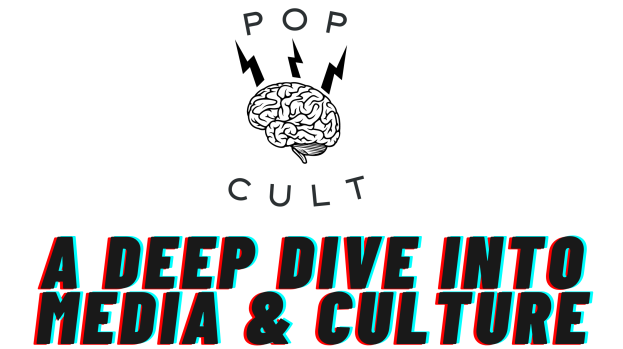The Adventures of Robin Hood (1938)
Written by Norman Reilly Raine, Seton I. Miller, and Rowland Leigh
Directed by Michael Curtiz and William Keighley
The Adventures of Robin Hood was unlike anything that had come before and would shape the type of films to come, even today. It was Warner Brothers’ most expensive movie with a $2 million budget. Additionally, it was shot using the first three-strip Technicolor process, a piece of technology that made it stand out against its box office competition. This film used all 11 Technicolor cameras that existed in 1938, which had never been attempted before. At the time, Warner had garnered a reputation for its social issue and low-budget gangster flicks, so something like Robin Hood felt incredibly ambitious for the studio. Once again, the film mimics a Douglas Fairbanks film from the silent era, continuing Errol Flynn’s track of reprising the roles of that actor.
Anyone familiar with the Robin Hood legends isn’t going to be thrown any curveballs here. King Richard has left for the Crusades, and his treacherous brother King John (Claude Rains) has seized power. John puts his friend Sir Guy of Gisborne (Basil Rathbone) in charge of imposing and collecting taxes. Sir Robin of Locksley (Errol Flynn) is riding through the forest when he comes upon a peasant about to be executed for hunting on the king’s land and saves the man. This begins Robin’s notorious career, forming the Merry Men and redistributing wealth to the working people of Nottinghamshire. Unfortunately, King John and Gisborne realize Robin’s soft spot for Maid Marian (Olivia de Haviland) and use that relationship to create a trap where they plan to capture the rogue and execute him as an example to the people.
This is the quintessential film depiction of Robin Hood. It has influenced every version that has come since, whether they adhere close to the elements of the 1938 production or actively make something to contrast with it. Even Disney’s 1970s Robin Hood film is an animated adaptation of this film, more or less. I wouldn’t say it is an authentic representation of England in the 12th century; it is very much a Hollywood production that is larger than life and focused more on taking advantage of being in Technicolor than presenting a recreation of history. Robin and his men wear completely ridiculous outfits, and you can easily see how Mel Brooks was influenced when he made his 1990s parody Robin Hood: Men in Tights.
On the surface, the film appears like a happy-go-lucky affair, but Flynn had developed ill feelings towards Curtiz since they worked on Captain Blood together. Flynn found Curtiz to have a harsh dictatorial style. Curtiz pushed for extravagance, while Flynn couldn’t help but think the injuries and deaths of many horses on the set of The Charge of the Light Brigade were tragic and unnecessary. Curtiz also had a penchant for pushing his actors to attempt dangerous stunts. For example, on the set of Robin Hood, the director felt the protective caps put on the ends of the real swords being used were making the scenes less exciting. Without telling Flynn, he had an actor remove the cap only to end jabbing Flynn, who reportedly became outraged, went over to Curtiz, grabbed him by the throat, and asked him, “Is this more exciting?”
It cannot be overlooked that Robin Hood is a highly flamboyant movie. Claude Rains’ performance as King John is one of the gayest things I have ever seen on film. While Rains was reportedly straight, he plays John totally gay-coded, aided by extravagant outfits and a ridiculous wig. At this time, major studios would never have thought to feature an openly gay character, and the closest you often got was queer-coded villains as we have here. While he is the villain, my personal take is that John is presented as not the most diabolical fiend ever imagined, and you’re meant to find him clever & witty in a sarcastic, biting queen sort of way.
Outside of influencing Robin Hood adaptations, this film clearly influenced the big-budget spectacles that would be made in the subsequent decades. The film was sold on technical elements like Technicolor, and its lavish production design is reminiscent of contemporary marketing of action-adventure movies based on their use of computer-generated imagery, surround sound, and other aspects. Unfortunately, it also presents a rather bland central character, similar to the same generic nature of many current action stars. However, there’s plenty of comic relief to cut through the tension, and it’s very apparent from the start that we won’t be seeing much tragedy befall our heroes.
In this same year, Curtiz had become concerned about the growing fascism in Europe and asked Warner Bros. president Jack Warner to see if he could contact the director’s family during a trip to Budapest. He also implored the studio head to see what he could do about acquiring visas to help them exit and come to America. Warner was able to get Curtiz’s mother out of Hungary, and she lived with her son in Hollywood for the remainder of her life. However, Curtiz’s sister, brother-in-law, and their three children could not and would eventually end up imprisoned in Auschwitz. Only one of the children would survive.


2 thoughts on “Movie Review – The Adventures of Robin Hood (1938)”